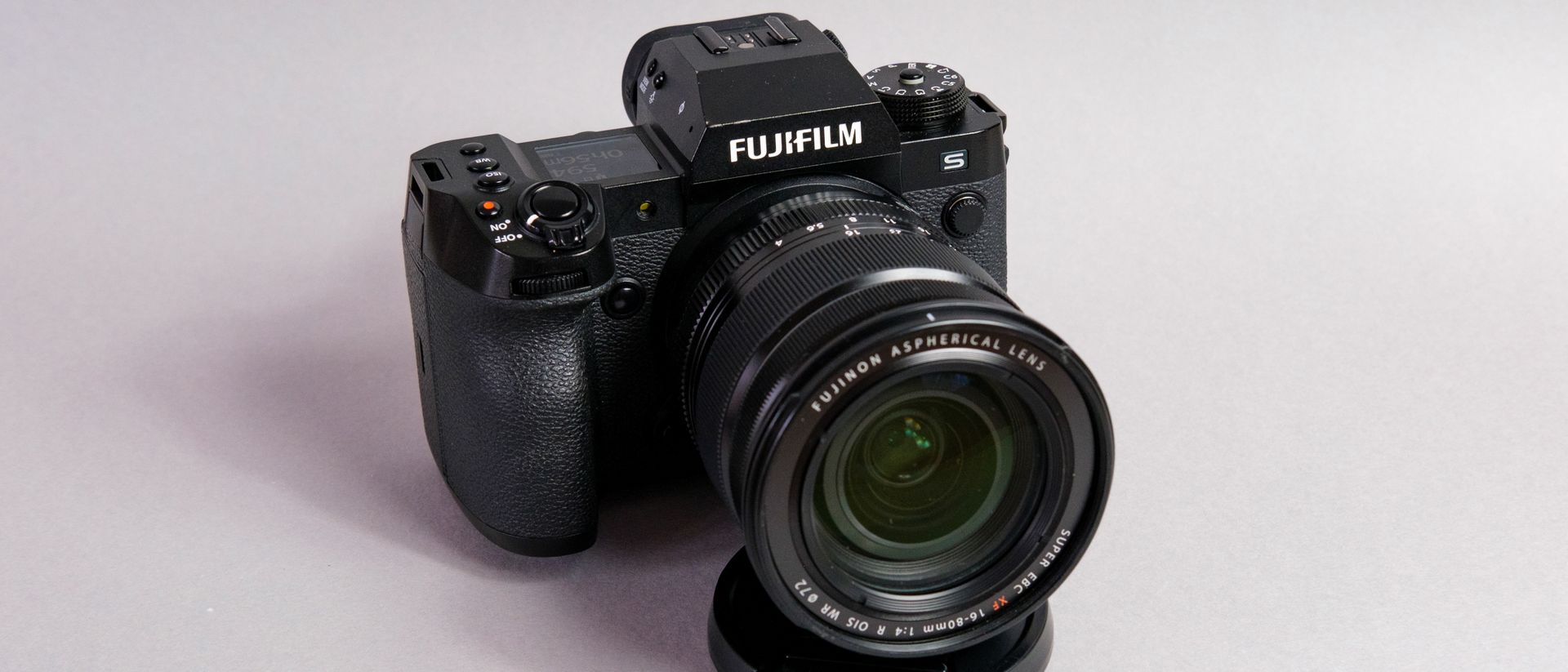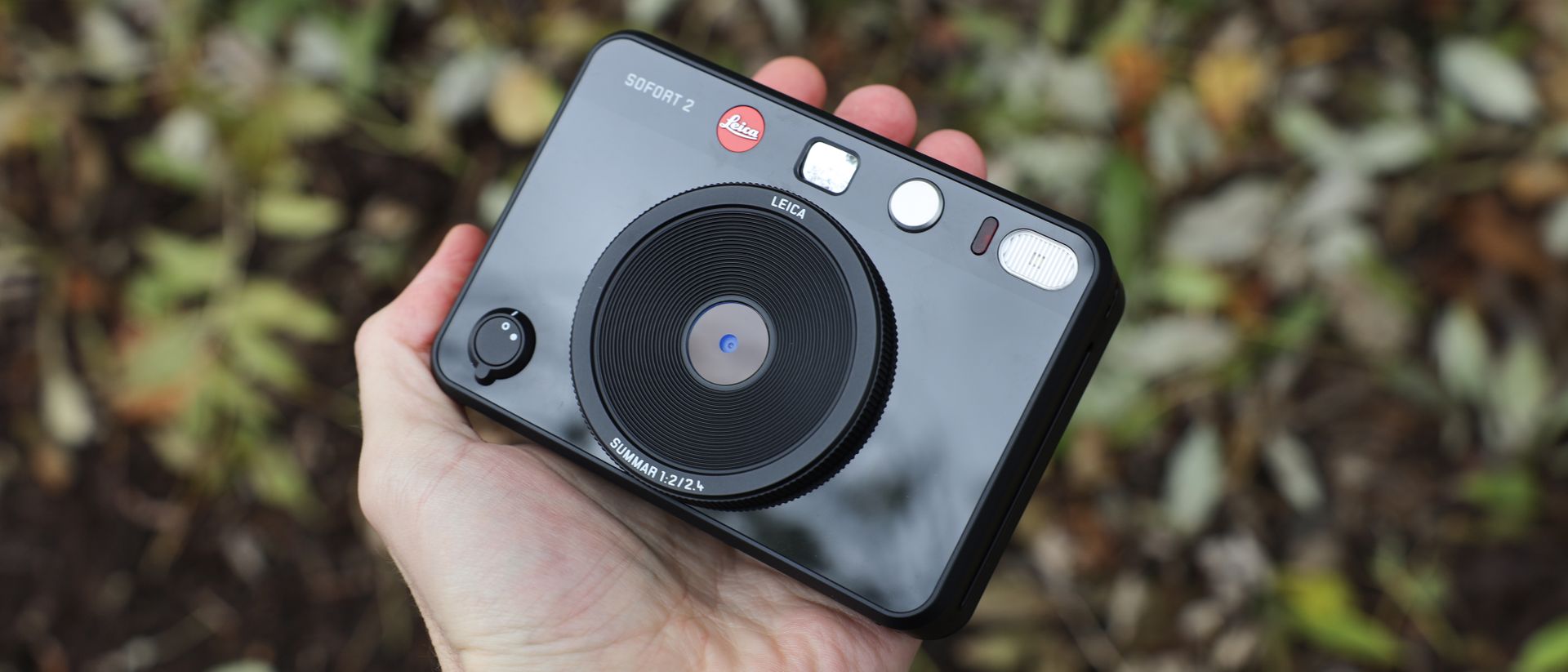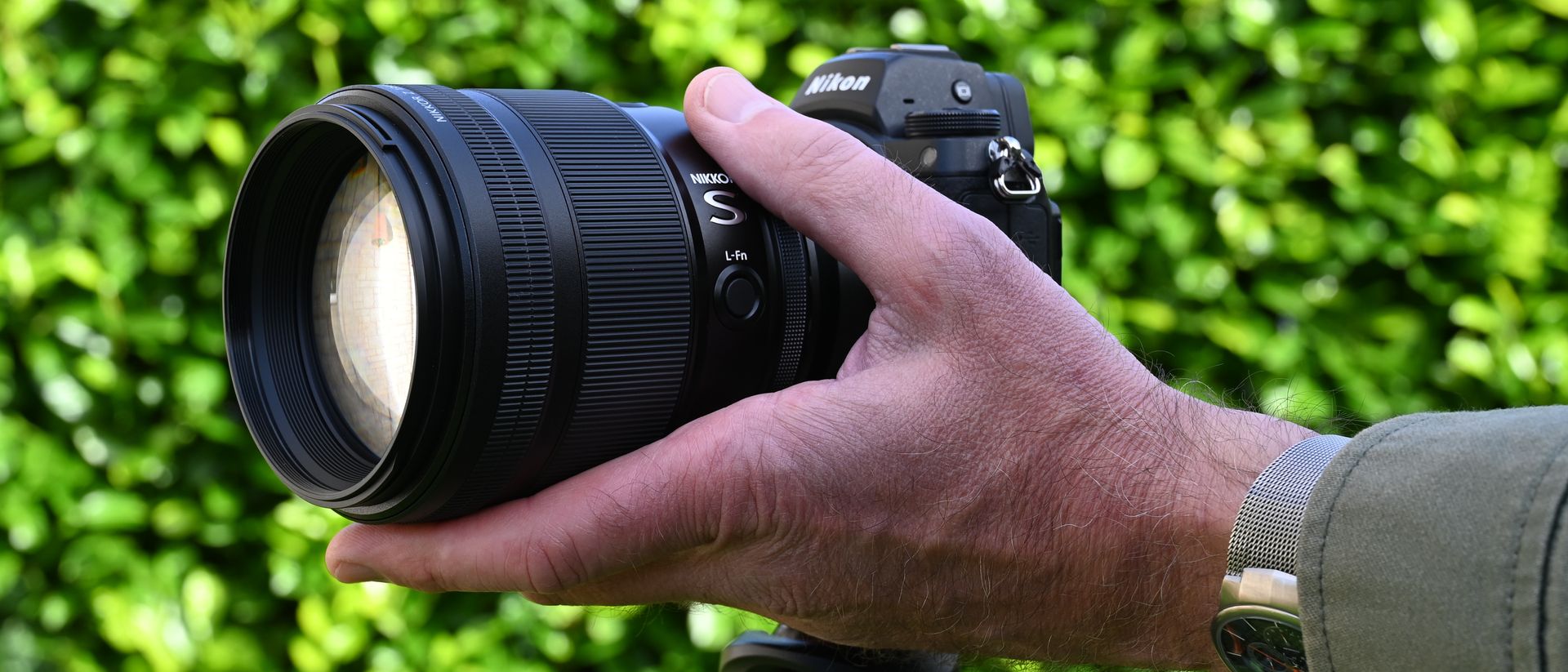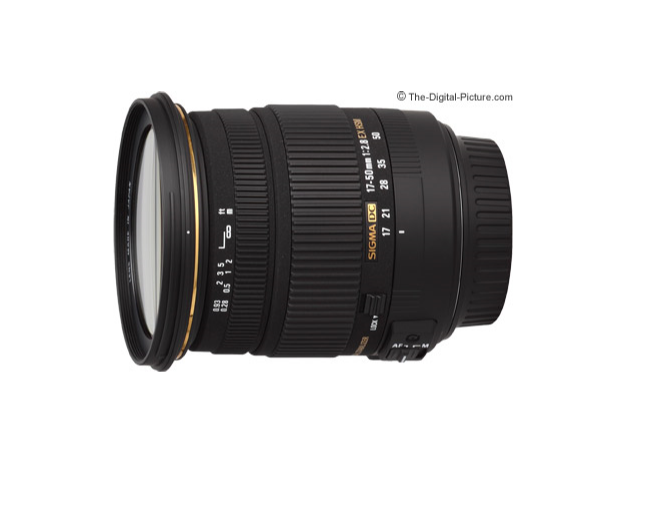
The Sigma 17-50mm f/2.8 EX DC OS HSM Lens features a nice range of focal lengths, a wide f/2.8 aperture, HSM autofocus and OS (optical stabilization) in a well-built and reasonably-priced lens.
Most of us need at least one general purpose lens – and the focal length range is usually my primary qualification for such a lens. The 17-50mm focal length range falls squarely in the recommended general purpose lens focal length range for the APS-C sensor format DSLRs it is compatible with.
This focal length range delivers that same angle of view that a 27.2-80mm lens on a full frame DSLR would deliver, but again, this APS-C-only lens is not compatible with the larger format SLRs. Here is an example of what this focal length range looks like.

Sigma 17-50mm f/2.8 EX DC OS HSM Lens Review

The Sigma 17-50mm f/2.8 EX DC OS HSM Lens features a nice range of focal lengths, a wide f/2.8 aperture, HSM autofocus and OS (optical stabilization) in a well-built and reasonably-priced lens.
Most of us need at least one general purpose lens – and the focal length range is usually my primary qualification for such a lens. The 17-50mm focal length range falls squarely in the recommended general purpose lens focal length range for the APS-C sensor format DSLRs it is compatible with.
This focal length range delivers that same angle of view that a 27.2-80mm lens on a full frame DSLR would deliver, but again, this APS-C-only lens is not compatible with the larger format SLRs. Here is an example of what this focal length range looks like.
My field work for the Sigma 17-50mm f/2.8 EX DC OS HSM Lens review was done in early spring. After a long, cold winter, the bright new growth on the trees was looking gorgeous to me. The 17-50mm focal length range is nice. It works great for around-the-house shots (inside and out), for landscapes, for full body and head-and-shoulders portraits, for close sports and for a huge range of other uses.
For many, their first general purpose lens is the one available in-the-box with their first DSLR. While the kit lens is very economical, it is also the source of many emails I receive – especially when being used indoors without a flash. If there is any subject movement, the max aperture available on these lenses is not wide enough to allow the action to be stopped – resulting in motion-blurred images.
The Sigma 17-50 OS’ fixed f/2.8 max aperture across the entire focal length range provides 4x as much light to the sensor (2 stops) as most kit lenses offer at their longest focal length (f/5.6). This aperture difference can translate into a big difference in your image quality.
There are many lenses with longer focal length ranges available. The longer focal length lenses frequently sacrifice image quality to obtain their range and most do not offer the fixed f/2.8 max aperture across the entire range. There are, however, many 17 to 50mm (or 55mm) f/2.8 lenses available from other manufacturers – I’ll reference some of these later in this review.
As I indicated already, a wide aperture is a great advantage for a lens to have. Use the wide aperture to stop action (or camera motion) in low light by allowing a faster/shorter shutting speed and/or to blur the background. (a wider aperture results in a shallower depth of field – all other factors remaining equal). At 17mm, you are going to need a close subject to generate any significant background blur at 17mm f/2.8, but, at 50mm, blurring the background becomes an easier accomplishment.
If your subject is not moving, the Sigma 17-50’s 4-stop-rated OS (optical stabilization) will be a great help in achieving sharp handheld shots in low light, in the wind, on unstable footing, on a boat … and in other situations where holding a camera steady is difficult and a tripod is not being used.
At 17mm, I am getting a good rate of sharp images from the Sigma 17-50mm f/2.8 EX DC OS HSM Lens at 1/4 sec exposures for a net 3-stops of assistance from OS. I have some sharp shots taken at .6 and .8 seconds, but the keeper rate is very, very low at these exposure durations. At 50mm, 1/10 or 1/8 seems to be my shutter speed limit for sharp images. This is, again, a net 3-stops of assistance from OS. I have a couple of sharp images made at 50mm and 1/5 sec, but the keeper rate is very low.
The Sigma 17-50mm f/2.8 EX DC OS HSM Lens is shown mounted on a Canon EOS 60D above.
With a wide open f/2.8 aperture, the Sigma 17-50mm f/2.8 EX DC OS HSM Lens is impressively sharp in the center throughout the focal length range with 50mm showing very slightly reduced sharpness. The corners are soft at f/2.8 with the 50mm corners looking the best. Stopping down does not significantly affect the center of the frame image quality – nor does it need to.
By f/5.6, corners show a little improvement overall and improvements are again realized at f/8. Stopping down at 50mm, the center shows slightly more improvement and the corners show somewhat less improvement than the rest of the range – due to the slightly worse/better 50mm f/2.8 center/corner sharpness. At f/11, diffraction begins to show – reducing image sharpness over most of the frame (though corners continue to improve).
The Sigma 17-50 OS controls vignetting quite well. With a wide open aperture, expect to see about 1.5 stops of peripheral shading in the corners at the two focal length extremes with noticeably less in the mid focal lengths. Stopping down to f/4 reduces the corner shading to about 1 stop at 17mm and about .8 stops remain at 17mm even at f/11. Note that a normal thickness circular polarizer filter will add a small amount of mechanical vignetting at 17mm – even at f/11.
Some chromatic aberration is noticeable in the corners in the wider half of the focal length range. As a generalization, CA is worst at 17mm and slowly improves through the balance of the focal length range. The amount of CA exhibited is not unusual for a lens in this class.
The Sigma 17-50 OS shows varying amounts of flare over the focal length and aperture ranges, but overall, it is a decent performer in this regard. Bokeh (background blur quality) generated by the 7-blade aperture appears to be mid-grade. The odd number aperture blade count will create 2x the number of light rays as aperture blades (14) from points of light when a narrow aperture is used (even blade counts deliver 1x light rays).
At 17mm, the Sigma 17-50 exhibits a noticeable bulge-in-the-middle barrel distortion. This distortion smoothly transitions to mild pincushion distortion at 50mm with approximately 25mm being the near-distortion-free transition focal length.
Overall, I’m pleased with the Sigma 17-50mm f/2.8 EX DC OS HSM Lens’ image quality, though the corner sharpness is the most lacking piece of the overall image quality puzzle.
The Sigma 17-50 OS incorporates Sigma’s (Hypersonic Motor) for moderately fast autofocusing. Though reasonably quietly, the 17-50 generates some gear noise during AF. Focus accuracy has been the biggest issue I’ve encountered with this lens. I’ve had many shots misautofocused for no apparent reason – especially in AI Servo mode.
Focusing is internal – the front element does not extend or rotate. Expect a relatively small amount of focus breathing from this lens – the subject/framing changes size a small amount when focusing.
FTM (Full Time Manual) focusing is not featured in this HSM AF implementation – the focus ring turns during AF. A printed-on-the-MF-ring focus distance scale is provided – and reveals the lack of FTM.
The focus ring is nicely sized and in the position I prefer – as the front-most ring. The Sigma 17-50 focuses smoothly, but with a relatively short 42° rotation and low rotation resistance, precise focusing is touchy.
With an 11″ (280mm) MFD and a .2x MM spec, the Sigma 17-50mm f/2.8 EX DC OS HSM Lens is not a strong contender in the close-up competition. But, these specs are in line with the other 17-fiftysomething f/2.8 lenses. And, these figures are good enough for many close subject needs.
However, that is not the end of the close-up story. The tested MFD for this lens is 9.17” (233mm) which should equate to about .24x MM. MFD testing uses manual focusing – and this lens indeed manually focuses closer than it will autofocus.
As I mentioned in the beginning of this review, the Sigma 17-50mm f/2.8 EX DC OS HSM Lens has very good build quality. I have not been a big fan of Sigma’s matte finish – especially because it readily shows fingerprints and dust. The good news is that only the edges of the zoom and focus rings retain the conventional Sigma finish. The hood and mount areas, the main lens areas not covered by rubber zoom or focus ring, are a much nicer (my opinion of course) smooth finish.
The focus and zoom rings are very smooth with no play. The zoom ring has an ideal amount of resistance while, as I indicated earlier in the review, the focus ring is slightly too easy to rotate
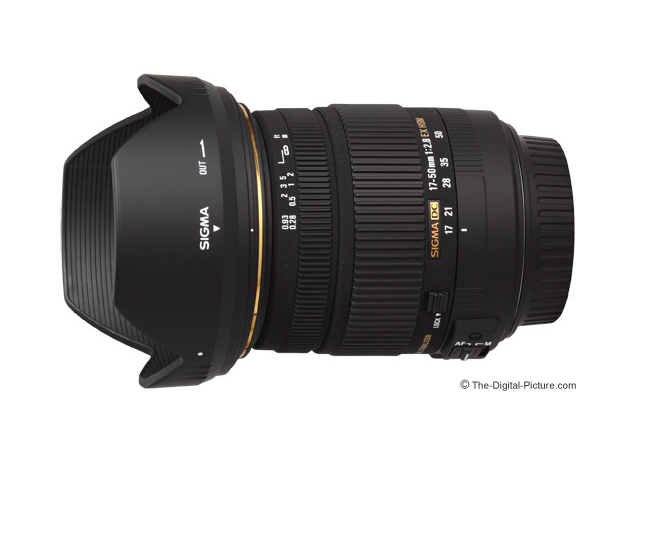
Like all other zoom lenses in its class, the Sigma 17-50 OS extends when zoomed to its longest focal length. There is very little play in the extending portion of the barrel.
My purchased-retail copy of this lens does not exhibit gravity-zooming behavior, but a lock switch is provided to assure the lens stays retracted at 17mm. The other two switches – AF/M and OS On/Off are noticeably raised from the lens barrel. These switches are located close enough to the lens mount that they are not uncomfortable during use, but they are easy to find with your left thumb.
The relatively small lens hood is large enough to help keep fingers and other objects from touching the front element. The Sigma center-and-side-pinch lens cap is very nice and is easy to install or remove with the hood in place.
Interested in selling your camera? Not knowing where to sell your product in Sydney? Visit Tradelectronics for the best deal
- Source: the-digital-picture







